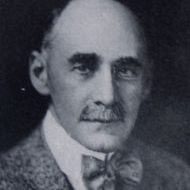Joseph Aspdin (1788-1855)
Joseph Aspdin (1788-1855) was granted the first patent on the manufacture of Portland cement in 1824.
He is mentioned in our Butchart Gardens History because the Butchart Gardens are a direct result of Portland cement manufacturing at Tod Inlet by Robert Butchart and the Vancouver Portland Cement Company.
Here are some excerpts from Chapter 3 of our Butchart Gardens History:
“Portland cement was developed in Leeds, England by Joseph Aspdin, who called his product “Portland” because he thought it resembled, in appearance or quality, a commonly used building stone quarried on the Isle of Portland. In 1824, Aspdin patented his process for manufacturing Portland cement, describing the steps involved as:
- Make quick lime from pure limestone. This is done by heating the limestone to approximately 412 C (800 F);
- Mix the quick lime with a predetermined quantity of clay and grinding the mixture in a wet state;
- Drying the ground mixture and breaking it up into small pieces suitable for burning in the kiln;
- Burning the mixture in a vertical kiln. Aspdin’s patent didn’t specify a burning temperature but this step requires temperatures of at least 1300 C (2400 F);
- Pulverizing the burned mixture, known as clinker, into a powder.
The 4th step is the most important. The mixture of ingredients going into the kiln, and the chemical proportions in which they are combined, are crucial; the mixture must contain a material with a high percentage of lime combined with another material containing a certain proportion of silica and alumina……
Joseph Aspdin built a factory at Wakefield, near Leeds, where he manufactured his new cement under the brand name of “Portland Cement.” By 1850, the name “Portland cement” was applied generically to all cement manufactured using Aspdin’s process…..”
Here are some sites with more information about Joseph Aspdin:
Would you like to leave a comment or question about anything on this page?
